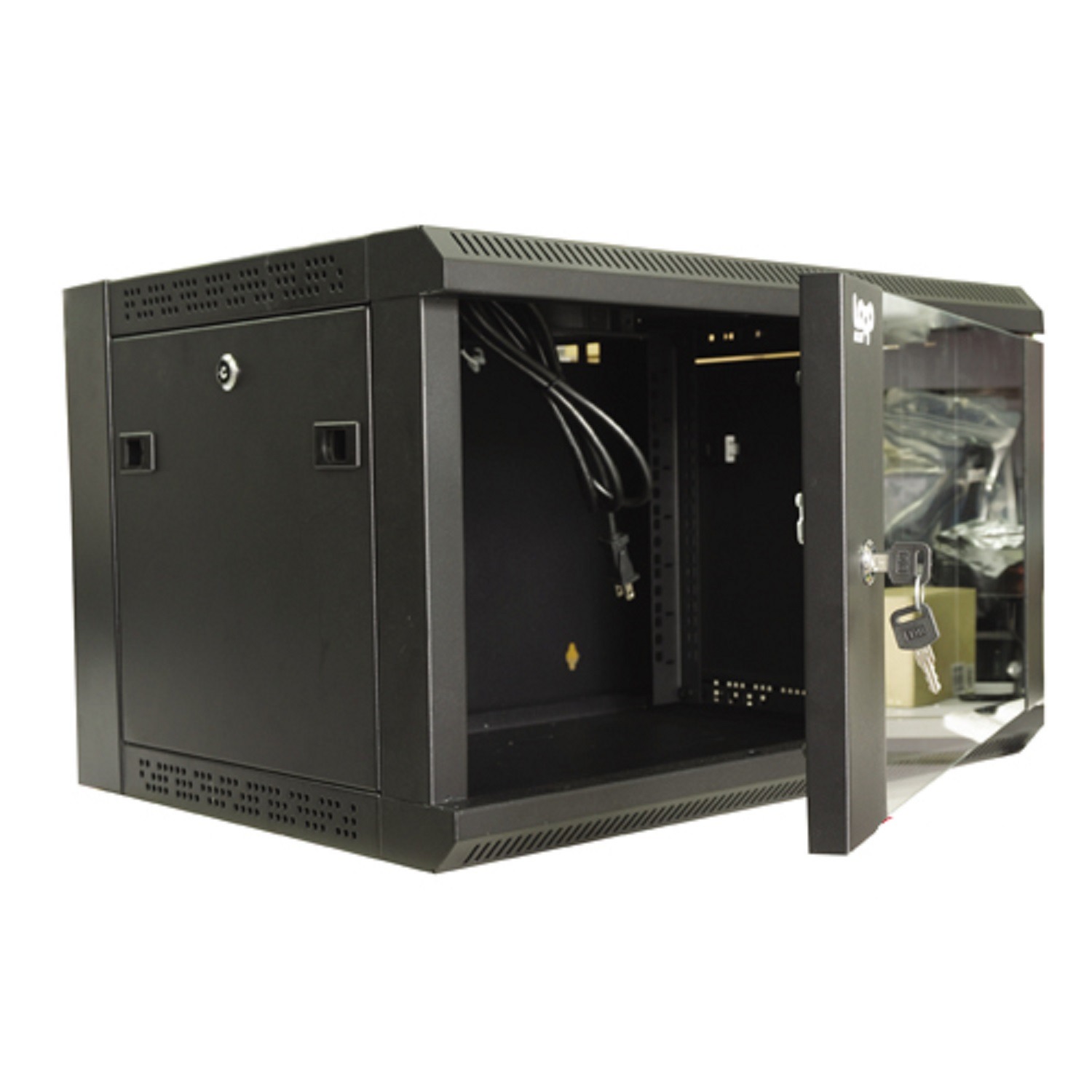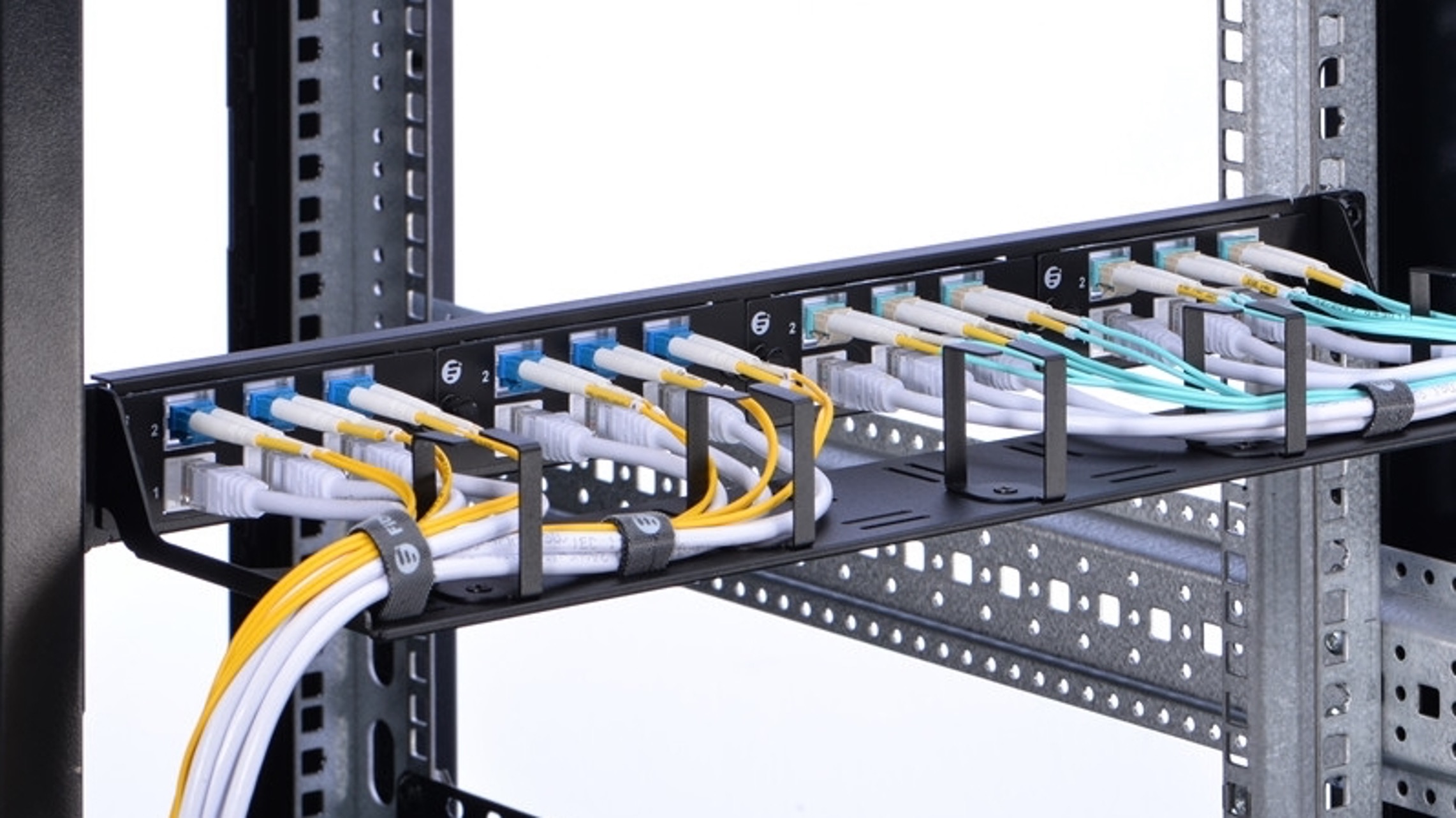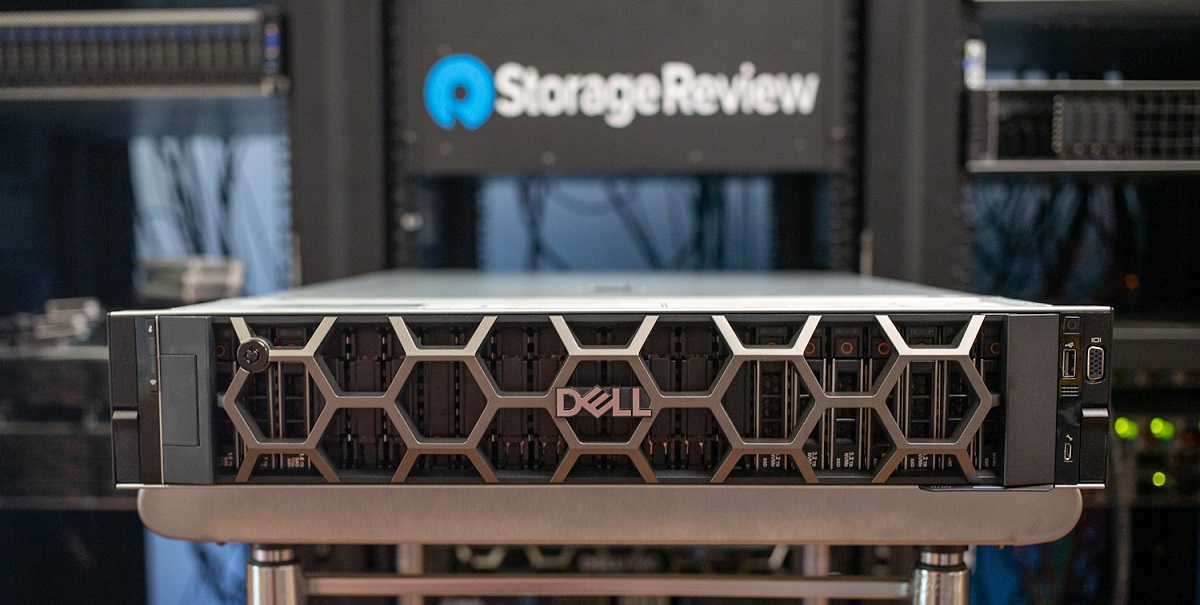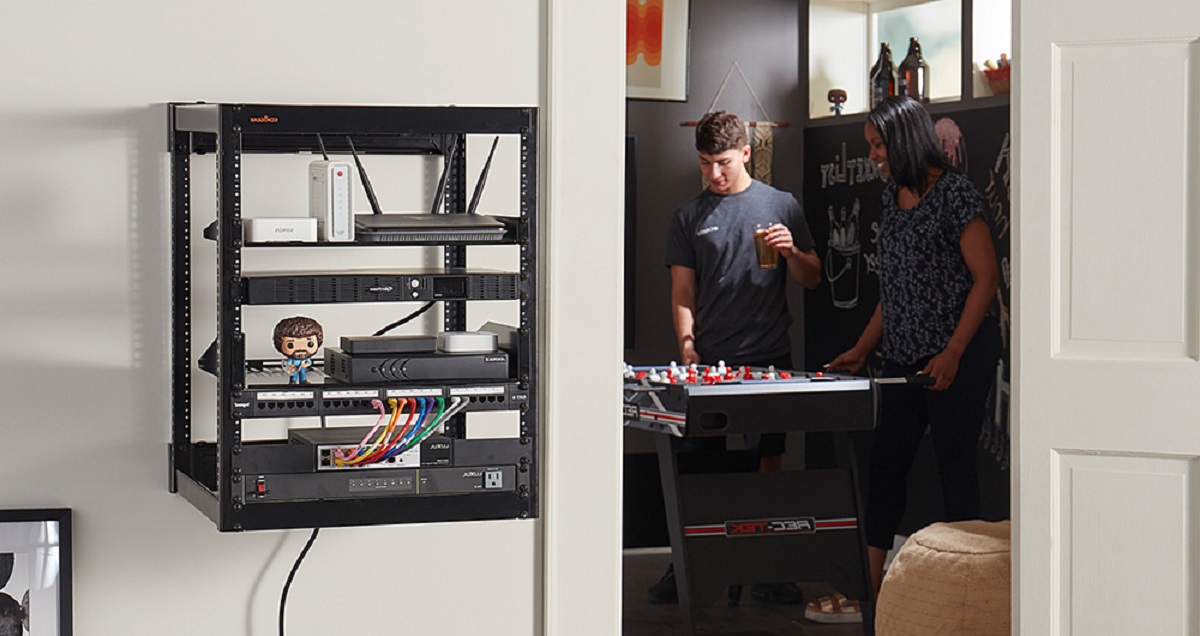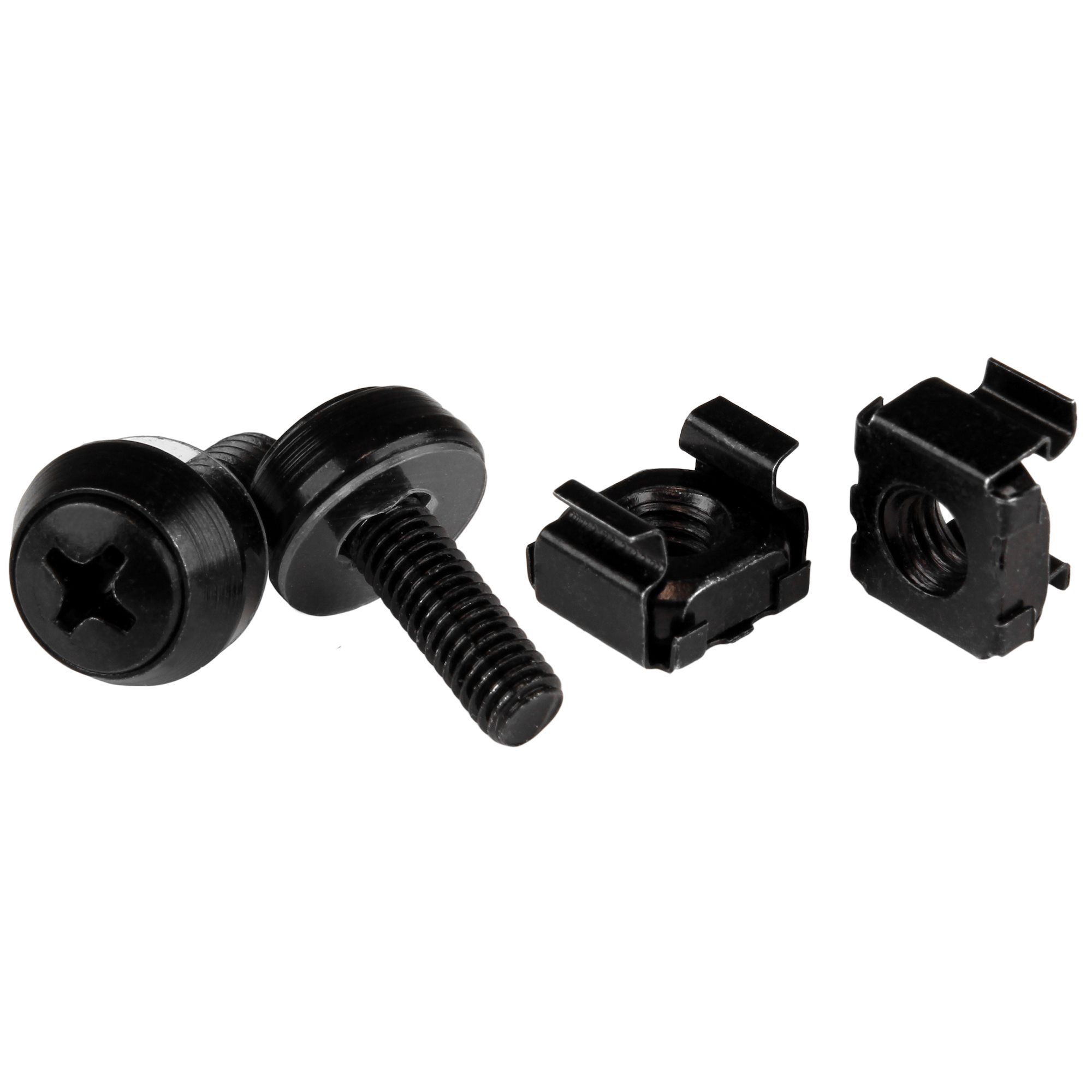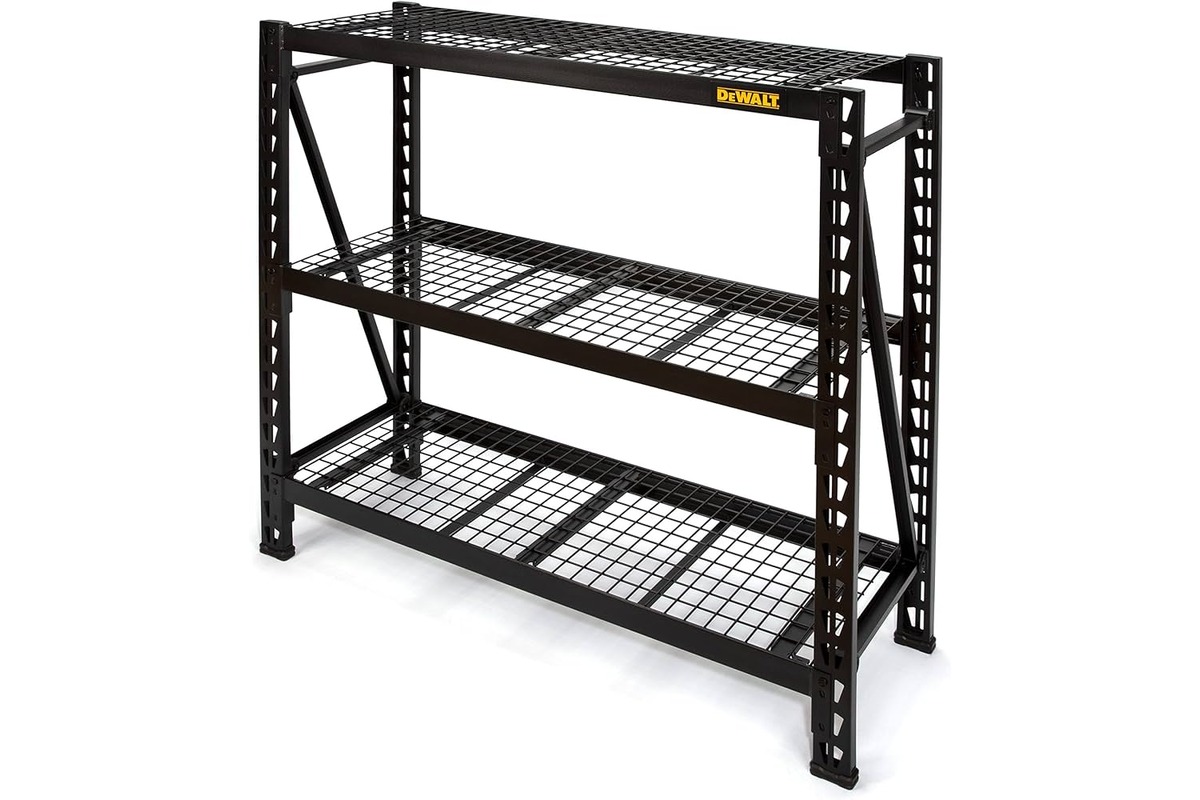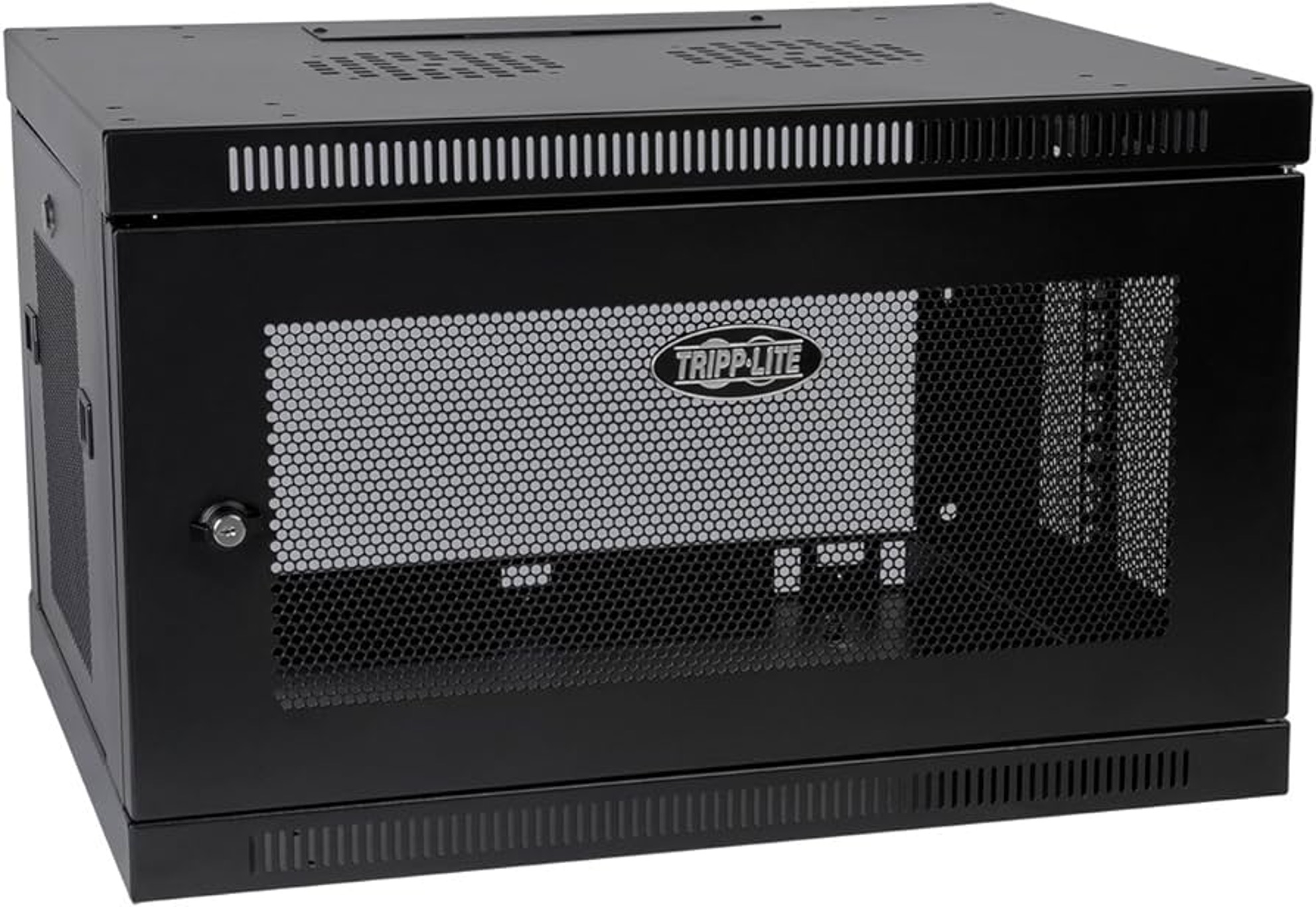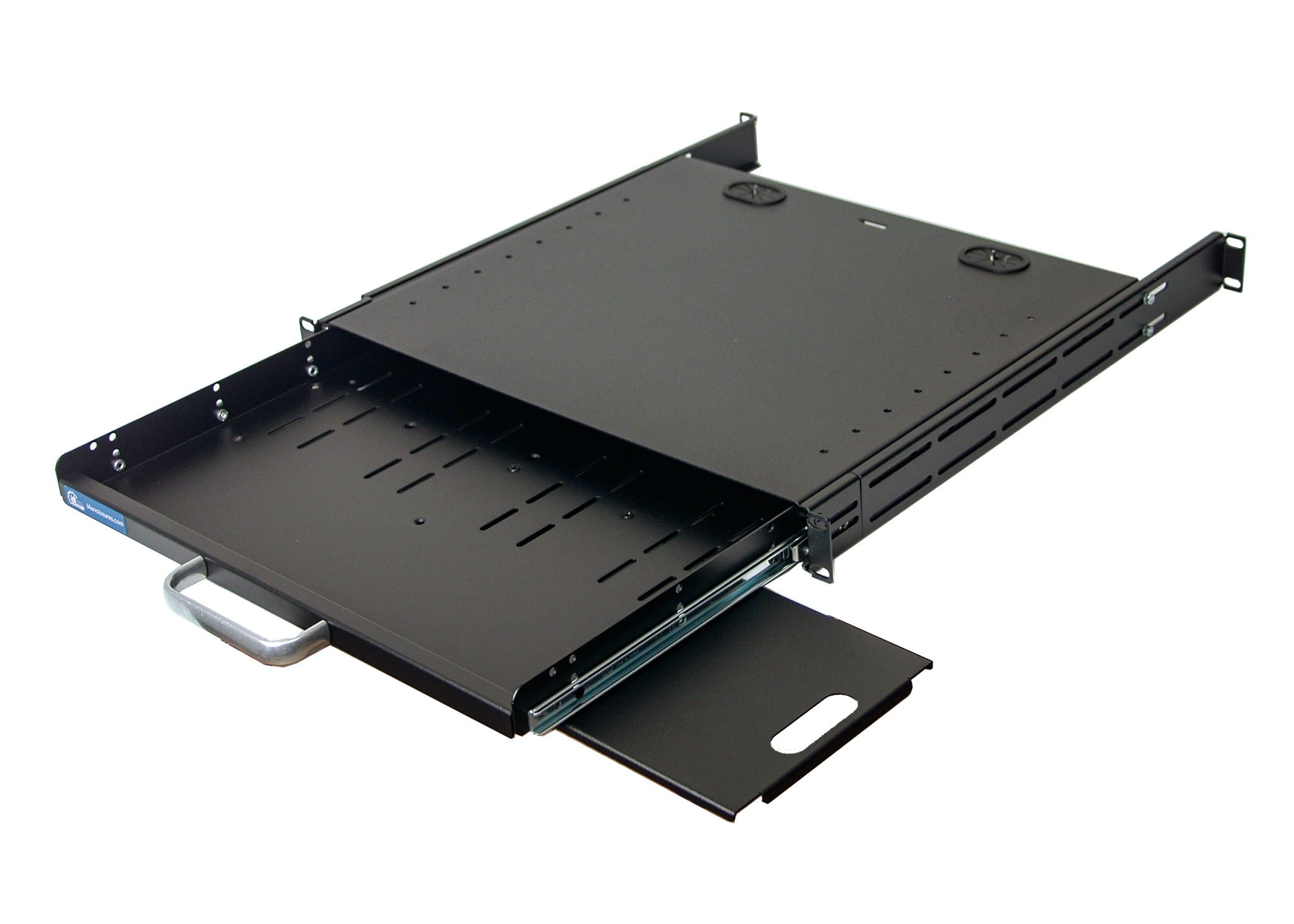Introduction
Welcome to our guide on how to buy the right server rack. Whether you’re setting up a small home office or managing a large-scale data center, choosing the right server rack is crucial for the smooth operation of your IT infrastructure. A server rack not only provides a secure and organized space for your servers, switches, and other networking equipment, but it also plays a vital role in ensuring proper cooling, cable management, and scalability.
With an overwhelming number of options available in the market, it can be challenging to determine the best server rack that suits your specific needs. That’s why we’ve prepared this comprehensive guide to help you make an informed decision.
In the following sections, we will delve into various factors to consider when purchasing a server rack. By the end of this guide, you’ll have a clear understanding of the essential features to look for and be equipped with the knowledge to select the perfect server rack for your requirements.
Determine your space requirements
The first step in buying the right server rack is to assess your space requirements. Consider the amount of floor space or rack space you have available for installation. Measure the dimensions of the area where the server rack will be placed to ensure it fits properly.
Think about your current and future server needs. How many servers do you have, and do you anticipate expanding your infrastructure in the near future? This will help you determine the size and capacity of the server rack you need. It’s also essential to take into account any other equipment you may need to accommodate, such as switches, routers, and UPS units.
If you have limited space, you may want to consider a compact or wall-mounted server rack. These racks are designed to optimize space utilization and are ideal for small businesses or home offices.
On the other hand, if you have a larger space or anticipate significant growth, you might consider a floor-standing server rack with multiple units. These racks offer increased capacity and flexibility for expanding your infrastructure down the line.
By accurately determining your space requirements, you can select a server rack that fits seamlessly into your environment and allows for future expansion.
Consider the server rack size
Once you have assessed your space requirements, the next step is to consider the size of the server rack. Server racks come in various heights, ranging from 1U (one rack unit) to multiple units, such as 42U or 48U.
The size of the server rack you choose will depend on the number and size of the servers and other network equipment you plan to install. Each server typically occupies a certain number of rack units (U) of space. Ensure that the rack you select has enough vertical rack units to accommodate all your equipment.
It’s advisable to leave some extra rack units for future growth or adding additional equipment. This allows for flexibility and avoids the need to purchase a new server rack every time you expand your infrastructure.
Additionally, consider the depth of the server rack. Some server equipment, such as storage arrays, may require deeper racks. Measure the depth of your equipment and ensure that the selected server rack can accommodate it comfortably.
Another factor to consider when determining the size of the server rack is the accessibility requirements. If you need frequent access to the equipment, it’s recommended to opt for a server rack with removable or swing-out side panels and easy-to-remove server rails.
Ultimately, choosing the right server rack size ensures that you have adequate space to house all your equipment and allows for smooth installation and future expansion.
Identify the weight capacity needed
When selecting a server rack, it’s crucial to consider the weight capacity it can support. Servers and networking equipment can be heavy, and exceeding the weight limit of the rack can lead to structural issues and potentially damage your equipment.
Start by calculating the total weight of the servers and other equipment that you plan to install in the rack. Take into account any future expansions or additions you may anticipate. It’s better to choose a server rack with a higher weight capacity than your current needs to allow for future growth.
Server racks usually specify weight capacities in both static and dynamic loads. The static weight capacity refers to the maximum weight the rack can support when it is stationary, while the dynamic weight capacity refers to the maximum weight it can hold when it is being moved or rolled on casters.
Remember to include the weight of any additional accessories, such as cable management panels or power distribution units (PDUs), in your calculations. These accessories can contribute to the overall weight and can impact the weight capacity of the rack.
If you have particularly heavy equipment, consider opting for a server rack with reinforced rails or additional support features to ensure its stability.
By accurately identifying the weight capacity needed, you can select a server rack that can safely accommodate your equipment and prevent any potential damage or stability issues.
Evaluate cooling options
Proper cooling is critical to maintain optimal performance and longevity of your servers and networking equipment. When choosing a server rack, it’s essential to assess the cooling options it provides to ensure that your equipment stays within safe operating temperatures.
One of the key cooling considerations is airflow management. Look for server racks that offer features like perforated front and rear doors or mesh side panels to promote sufficient airflow. Proper ventilation helps dissipate heat and prevents equipment from overheating.
Consider the positioning of the server rack in your space. If the rack is placed in an enclosed area, such as a server room or a closet, you might need additional ventilation or cooling mechanisms like fans or air conditioning. Evaluate if the rack has provisions for integrating these cooling solutions.
Additionally, pay attention to cable management and airflow within the rack. Poorly organized cables can obstruct airflow and create hotspots. Choose a server rack that offers ample space and cable management features like cable trays or vertical cable organizers to maintain proper airflow and minimize cable clutter.
Another cooling consideration is the ability to segregate hot and cold air. Some server racks come with built-in airflow management features like hot-aisle/cold-aisle containment. This ensures that hot air from the servers is separated from the cool air intake, improving cooling efficiency.
Lastly, consider the compatibility of the server rack with supplemental cooling accessories, such as rack-mounted cooling fans or cooling units. These additions can enhance cooling efficiency, but ensure that the server rack has the necessary provisions and power requirements for integrating them.
By evaluating cooling options, you can select a server rack that promotes optimal airflow and temperature management, reducing the risk of equipment failure due to overheating.
Take security into account
Security is a crucial consideration when choosing a server rack to protect your valuable data and equipment from unauthorized access or potential damage. Here are some factors to consider:
First and foremost, assess the physical security features of the server rack. Look for racks with lockable doors and side panels to restrict access to authorized personnel only. This helps prevent tampering with your equipment and safeguards sensitive data.
Consider the type of locking mechanism offered by the server rack. Options range from key locks to more advanced options like combination locks or electronic access control systems. Choose a locking mechanism that aligns with your security requirements and allows for easy management of access.
Another aspect to consider is the rack’s construction and material. Racks made from sturdy materials like steel provide greater protection against theft or physical damage. Look for racks with reinforced frames and tamper-resistant features for added security.
In addition to physical security, think about the rack’s ability to maintain cable security. Look for built-in cable management features that help organize and secure cables, preventing accidental disconnections or unauthorized access.
Consider the location where the server rack will be placed. If it’s in a public or shared space, you may want to consider racks with opaque doors or side panels to prevent the visibility of sensitive equipment and deter potential threats.
Finally, think about environmental security features. Server racks equipped with sensors for temperature and humidity monitoring can help detect and prevent potential issues that may impact your equipment’s performance and longevity.
By taking security into account, you can ensure that your server rack provides the necessary measures to protect your valuable data and hardware from unauthorized access or physical damage.
Assess cable management features
Efficient cable management is essential for a well-organized and functional server rack. Proper cable management not only improves the aesthetics of the rack but also reduces the risk of cable damage, eases troubleshooting, and aids in airflow management. Here are some key factors to consider when assessing cable management features:
First, evaluate the available space for cable management within the server rack. Look for racks that offer ample room for routing and securing cables. Built-in cable management features such as cable trays, vertical cable organizers, or brush strips can help keep cables organized and prevent them from becoming tangled or obstructing airflow.
Consider the accessibility and ease of cable management. Server racks with removable side panels or swing-out doors simplify cable routing and maintenance by providing easy access to the rack’s interior. Additionally, racks with adjustable mounting rails allow for flexible positioning of equipment and cables according to your specific requirements.
Look for racks that offer cable management options for vertical as well as horizontal cable routing. Vertical cable management ensures that cables are neatly organized from top to bottom, while horizontal cable management options like cable rings or cable management arms facilitate proper cable routing within the rack.
Consider the availability of cable management accessories and their compatibility with the server rack. Cable management accessories include cable ties, cable management clips, and Velcro straps. These accessories can help secure and organize cables effectively.
Think about cable labeling options within the server rack. Clearly labeled cables simplify troubleshooting and maintenance tasks. Look for racks that provide dedicated spaces or labels for easy identification of cables, reducing the time spent on identifying and tracing specific connections.
Remember to plan for future cable management needs as well. Anticipate expansion or changes in equipment and ensure that the chosen server rack has enough capacity for accommodating additional cables. Scalable cable management options like expandable cable trays or modular cable guides can be beneficial in this aspect.
By assessing the cable management features of a server rack, you can ensure a well-organized and efficient infrastructure, minimizing cable-related issues and simplifying future maintenance tasks.
Consider scalability and future-proofing
When investing in a server rack, it’s important to consider not only your current needs but also your future requirements. Scalability and future-proofing features will allow your infrastructure to adapt and grow as your business evolves. Here are some aspects to consider:
Start by assessing the expandability options of the server rack. Look for racks that offer versatile configurations and adjustable mounting rails. The flexibility to add or remove rack units or adjust the depth of the rack can accommodate future equipment upgrades or changes.
Consider the weight capacity of the server rack and ensure that it can handle additional equipment or heavier servers that you may introduce in the future. Opting for a rack with a higher weight capacity than your current needs will prevent the need for replacement when you expand your infrastructure.
Think about the compatibility of the server rack with different types of equipment. Ensure that it can support a variety of server sizes and form factors, as well as networking equipment such as switches and UPS units. This flexibility will allow you to add or replace equipment without being limited by rack constraints.
Consider the availability of expansion accessories and add-ons. Look for server racks that offer options for additional shelves, cooling units, power distribution units (PDUs), or cable management solutions. These expandable features will enable you to optimize your infrastructure and adapt to future needs.
Think about the overall design and layout of the server rack. A modular and modular design will make it easier to add or remove components as needed. Look for racks that support tool-less installation and adjustments, simplifying future maintenance and upgrades.
Consider the overall quality and durability of the server rack. Invest in a well-built, sturdy rack that can withstand the demands of a growing infrastructure. Avoid opting for cheaper, lower-quality options that may need to be replaced sooner or lack the necessary features for scalability.
By considering scalability and future-proofing in your server rack selection, you can ensure that your infrastructure can adapt to changing technology and business needs without requiring a complete overhaul or replacement.
Explore different rack enclosure designs
When choosing a server rack, it’s important to consider the different enclosure designs available and select one that suits your specific needs. The enclosure design plays a significant role in the overall functionality, accessibility, and aesthetics of the rack. Here are some common rack enclosure designs to consider:
1. Open Frame Racks: These racks offer a simple and cost-effective solution with a skeletal structure consisting of two or four vertical posts and mounting rails. Open frame racks provide easy access to equipment from all sides and are ideal for environments where security is not a primary concern.
2. Wall-Mounted Racks: As the name suggests, these racks are mounted on walls and are space-saving options for small offices or areas where floor space is limited. Wall-mounted racks typically have a smaller form factor and offer easy access to equipment from the front.
3. Cabinet Racks: Cabinet-style racks provide 360-degree enclosure and are typically preferred for larger installations or data centers. They offer top and bottom panels, as well as lockable front and rear doors, providing better security and cable management capabilities.
4. Soundproof Racks: Designed to reduce noise levels and eliminate sound pollution, soundproof racks are suitable for environments where noise-sensitive equipment is used, such as recording studios or offices. These racks feature specialized insulation and ventilation systems to maintain a quiet environment.
5. Portable Racks: Portable racks are lightweight and designed for easy transport. These racks often feature handles and casters, allowing for convenient mobility, making them suitable for IT professionals who frequently need to move equipment or perform onsite installations.
6. Specialty Racks: Specialty racks cater to specific requirements. For example, server racks with seismic certification are designed to withstand earthquakes, while outdoor-rated racks are built to withstand harsh weather conditions. Evaluate if you have any unique needs that may require a specialized rack configuration.
Consider factors such as the level of security required, accessibility needs, available space, and environmental conditions when exploring different rack enclosure designs. Ensure that the chosen design aligns with your infrastructure requirements and provides the necessary features for optimal equipment housing and management.
Determine the right rack material
When selecting a server rack, one important consideration is the material from which it is constructed. The choice of rack material can impact durability, weight capacity, and overall performance. Here are some common rack materials to consider:
1. Steel: Steel racks are known for their strength and durability. They can support heavy equipment and offer excellent protection. Steel racks are ideal for high-traffic environments or where security is a concern. However, they tend to be heavier than other materials, so it’s important to ensure that the floor can handle the weight.
2. Aluminum: Aluminum racks are lightweight and corrosion-resistant. They are ideal for portable applications or installations in areas where weight is a concern. While not as strong as steel racks, aluminum racks are still capable of supporting standard server equipment.
3. Wood: Wood racks are cost-effective alternatives but are commonly used for home or small office setups. They are generally not suitable for high-density server installations due to limited weight capacity and fire safety concerns. However, they can be an aesthetically pleasing option for non-critical environments.
4. Composite or Plastic: Composite or plastic racks offer advantages such as lightweight construction and resistance to corrosion, making them suitable for outdoor or harsh environments. They are also non-conductive, which can be an important consideration when dealing with electrical components. However, they may have lower weight capacities compared to metal racks.
Consider your specific requirements when determining the right rack material. If you prioritize durability and security, a steel rack may be the best choice. If weight is a concern, aluminum or composite racks may be more suitable. Additionally, take into account environmental factors such as humidity or exposure to corrosive substances that may impact the rack material’s longevity.
It’s important to note that the material used for the rack frame should not interfere with the proper grounding and bonding of the equipment. Ensure that the chosen rack material meets the necessary electrical compliance requirements to maintain a safe and reliable installation.
By carefully evaluating the pros and cons of different rack materials, you can select a rack that strikes the right balance between durability, weight, and cost for your specific needs.
Review additional features and accessories
When choosing a server rack, it’s important to consider additional features and accessories that can enhance functionality, organization, and ease of use. Here are some key features and accessories to review:
1. Casters and Levelers: Look for server racks equipped with casters or wheels for easy movement and accessibility. Levelers ensure stability by adjusting the rack’s height and compensating for uneven floors.
2. Removable Side Panels: Removable side panels provide convenient access to the rack’s interior for installation, maintenance, and equipment adjustments. They simplify cable management and allow for better airflow.
3. Adjustable Mounting Rails: Opt for racks with adjustable mounting rails that allow flexibility in positioning servers and other equipment. This feature allows for easier installation and future equipment adjustments.
4. Cable Management Accessories: Cable management is crucial for maintaining a clean and organized rack. Look for additional accessories like cable management arms, cable managers, or cable clips to keep cables neatly organized and minimize tangles and clutter.
5. Power Distribution Units (PDUs): PDUs provide additional power outlets within the rack, making it easier to connect and manage power for multiple devices. Consider racks that have built-in PDU options or the ability to integrate external PDUs.
6. Rack-Mountable Cooling Solutions: If you require additional cooling for your equipment, explore rack-mountable cooling options such as fans or cooling units. Ensure that the selected rack has provisions to support these cooling solutions.
7. Locking Mechanisms: Security should always be a priority. Look for racks with robust locking mechanisms that enhance physical security and prevent unauthorized access to your equipment. Combination locks or electronic access control systems provide enhanced security features.
8. Mesh or Perforated Doors: Racks with mesh or perforated front and back doors promote proper airflow and ventilation, ensuring optimal cooling for your servers and other equipment.
9. Display and Equipment Shelves: Consider racks that offer display shelves or additional equipment shelves. These accessories provide convenient storage for monitors, keyboards, or non-rack-mountable equipment.
10. Grounding and Bonding Features: Ensure that the rack has proper grounding and bonding features to maintain electrical safety and protect your equipment from power surges or electrical faults.
By reviewing these additional features and accessories, you can select a server rack that offers the necessary enhancements for better organization, accessibility, security, and cooling, resulting in a well-equipped and efficient infrastructure.
Conclusion
Choosing the right server rack is a crucial decision that can greatly impact the performance, organization, and scalability of your IT infrastructure. By considering the key factors discussed in this guide, you can make an informed decision and select a server rack that aligns with your specific needs.
First, assess your space requirements and determine the size of the rack that fits your available area and equipment. Consider the weight capacity needed to safely support your servers and networking equipment. Evaluate cooling options to ensure proper airflow and temperature management within the rack.
Take security into account and choose a server rack that offers features like lockable doors and cable management for added protection. Assess cable management features to promote organization and prevent cable clutter. Consider scalability and future-proofing to accommodate future expansions or changes in your infrastructure.
Explore different rack enclosure designs to find one that suits your requirements and environment. Determine the right rack material based on factors like durability, weight, and environmental considerations. Lastly, review additional features and accessories such as casters, cable management accessories, and power distribution units to enhance functionality and convenience.
By carefully considering these aspects and selecting a server rack that meets your specific needs, you can ensure a well-organized, secure, and efficient IT infrastructure that grows with your business. Take the time to research and evaluate different options, and don’t hesitate to consult with experts or professionals in the field for additional guidance.
Ultimately, investing in the right server rack is an investment in the stability and growth of your IT infrastructure, providing a solid foundation for your business’s digital operations.









